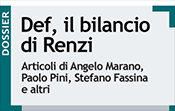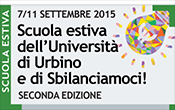Ultimi link in questa sezione
I pericoli della diseguaglianza crescente
It is said that Washington D.C. is a political and cultural bubble hardly representative of the American heartland. Some people, in particular on the right, call it “elitist,” alongside other coastal hubs such as New York and San Francisco. Yet, there is at least one way in which the federal capital is a worthy ambassador for the United States: it leads the rest of the country in the level of income inequality.
It is a problem particularly visible here – with the posh, cosmopolitan northwest corner of the city populated by lobbyists, diplomats, and students attending expensive private universities, and the downtrodden south- and north-east of low-income, low-skilled workers.
According to a recent study by the DC Fiscal Policy Institute, between 1979 and 2009 the median wage of residents of the District of Columbia who held at least a college degree rose 30% (adjusted for inflation,) while people with only a high school degree have experienced a wage increase of approximately 1%. At the national level, only Atlanta and Boston display wider gaps between the well off and the not so well off.
But income inequality is real across America and has been growing. To prove it, a host of data has emerged since the recession. And now some recent research also explains how large levels of inequality risk undermining the foundations of a healthy market economy.
continua qui










